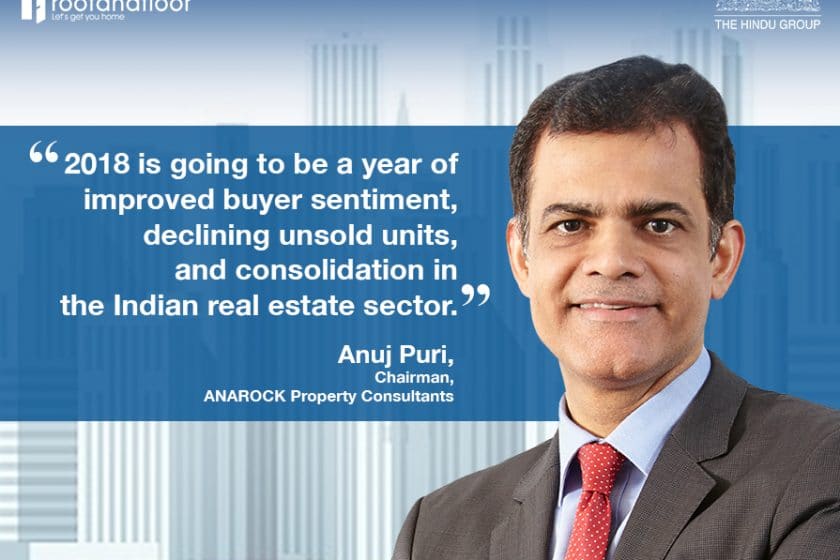A quick look at the numbers of the first month of 2018 reveals that the market is changing for good. With new launch sales of 500 units across the top seven cities of India in January 2018, new launch sales have doubled from December 2017.
This uptick is a major motivational boost to stakeholders who had been grappling with subdued demand for the past few years. Although a couple of months into 2018 are not a significant indicator of how the markets will behave during the ensuing months of the year, they surely provide guiding cues.
As ANAROCK’s Annual Residential Report 2017 illustrates, there are certain teething troubles in the real estate sector that is adjusting to the new ways of doing business, and a few trends are likely to stick around in 2018:
A continuing buyers’ market
With the crackdown on black money and benami transactions, stringent norms, and compliances under the RERA regime, investors – and, more importantly, speculators – have been pushed out of the market.
The Indian real estate sector was extremely buyer-friendly in 2017 and presented an opportune time to ‘seal the deal.’
This trend is likely to continue in 2018 as well and may, in fact, be strengthened amidst limited new launches. A quick comparison of new launches indicates that in January 2018, new launches declined by 17% from the previous month and were noted to be around 5,500 units. The crazy days of pre-launches and soft launches have come to an end, and the market has gained some sanity.
Focus on affordable housing
With notable incentives and benefits offered to the affordable housing sector – including relaxed GST rates, granting of infrastructure status and changes in area considerations for affordable units – the Indian Government seemed quite focused on the development of affordable housing during the past year.
This trend is likely to strengthen further in 2018 as there will be significant action in this segment as the government focuses on its ‘Housing for All by 2022’ mission.
However, it will also be a testing time for the affordable housing segment, as the same-year sales for new launches in 2017 have been lacklustre – only 19% of units were absorbed.
Sustained demand for ready-to-move-in projects
With the implementation of GST in 2017 and uncertainty on the input tax credit (ITC) calculation, the overall outflow of funds for a homebuyer seemed to have increased. Although GST is expected to be a tax-neutral proposition and the government has clear anti-profiteering rules, the prevailing uncertainty is leading to a natural preference from homebuyers for ready-to-move-in projects.
In addition, many buyers have previously burnt their hands by investing in under-construction projects which were overly delayed. As a result, buyers have now become extra-cautious.
In addition, with around 1.7 lakh units likely to complete in 2018, there will be a significant spread of options in ready-to-move-in and nearing-completion projects for buyers to pick from as per their requirements.
Consolidation of real estate businesses
Also, due to the crackdown on black money and benami transactions, dubious players are likely to be pushed out of the market. In addition, under strict compliance norms and accountability in the RERA regime, many small businesses may not be able to manage the requirements and may choose to exit. As a result, we are likely to witness a massive consolidation of real estate businesses in 2018.
This will include all stakeholders of the real estate sector, including developers and real estate consultants. Post cleansing of the system, only good players with the right business intent will continue to operate in the Indian real estate sector.
In a nutshell, 2018 is going to be a year of improved buyer sentiment, restricted new launches, improving sales, declining unsold units, and consolidation in the Indian real estate sector.
This article is contributed by Anuj Puri, Chairman, ANAROCK Property Consultants.
(The views expressed here are solely those of the author and do not necessarily represent or reflect the views of RoofandFloor.)


